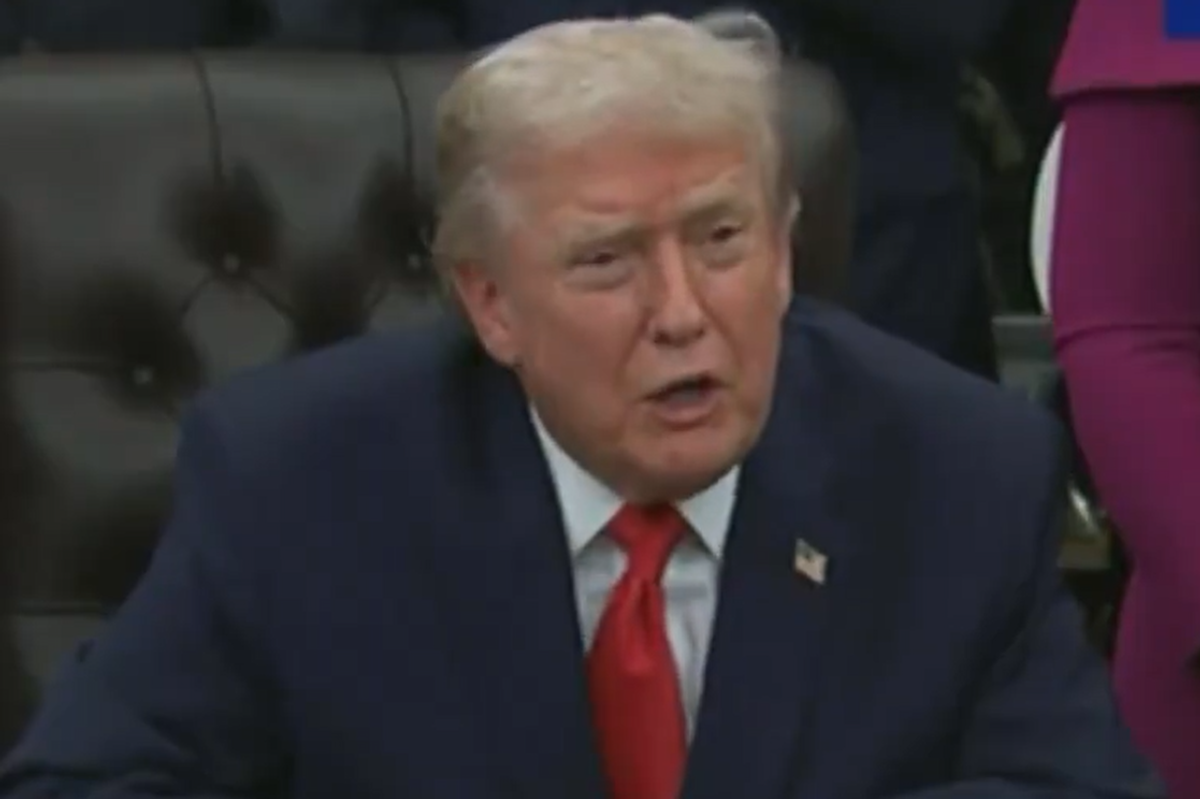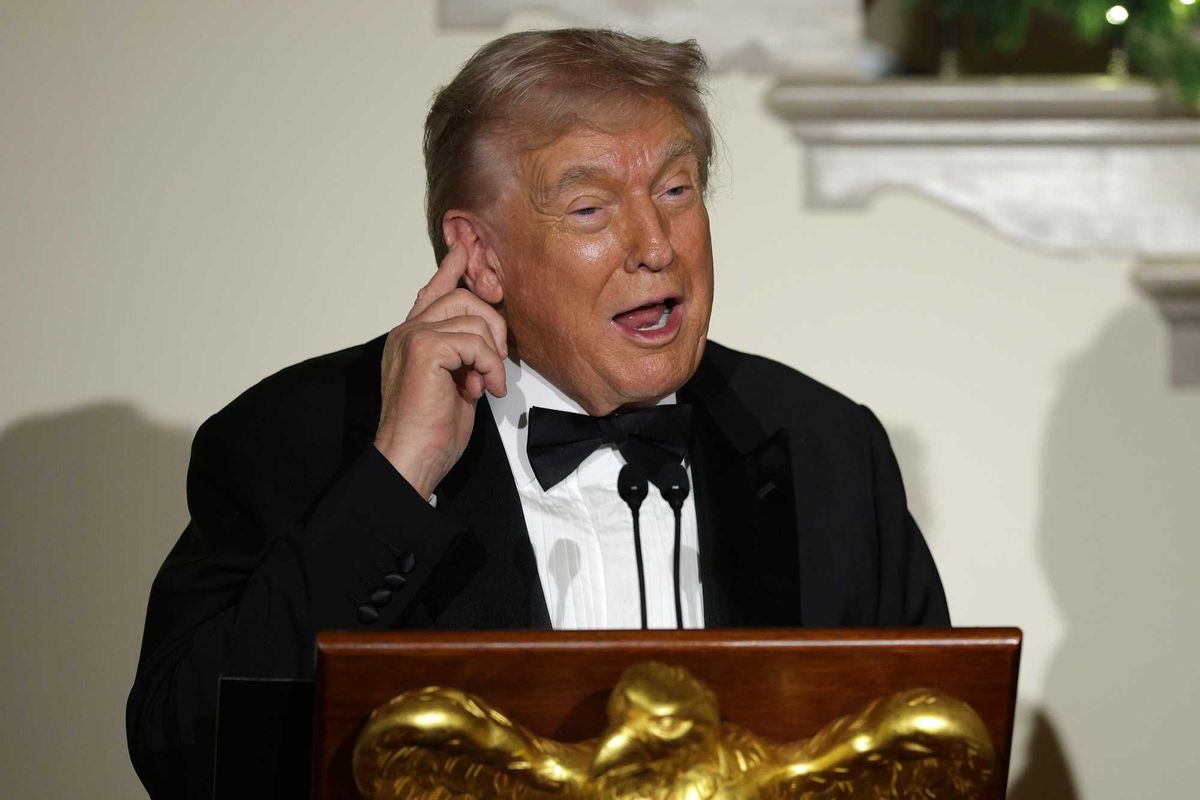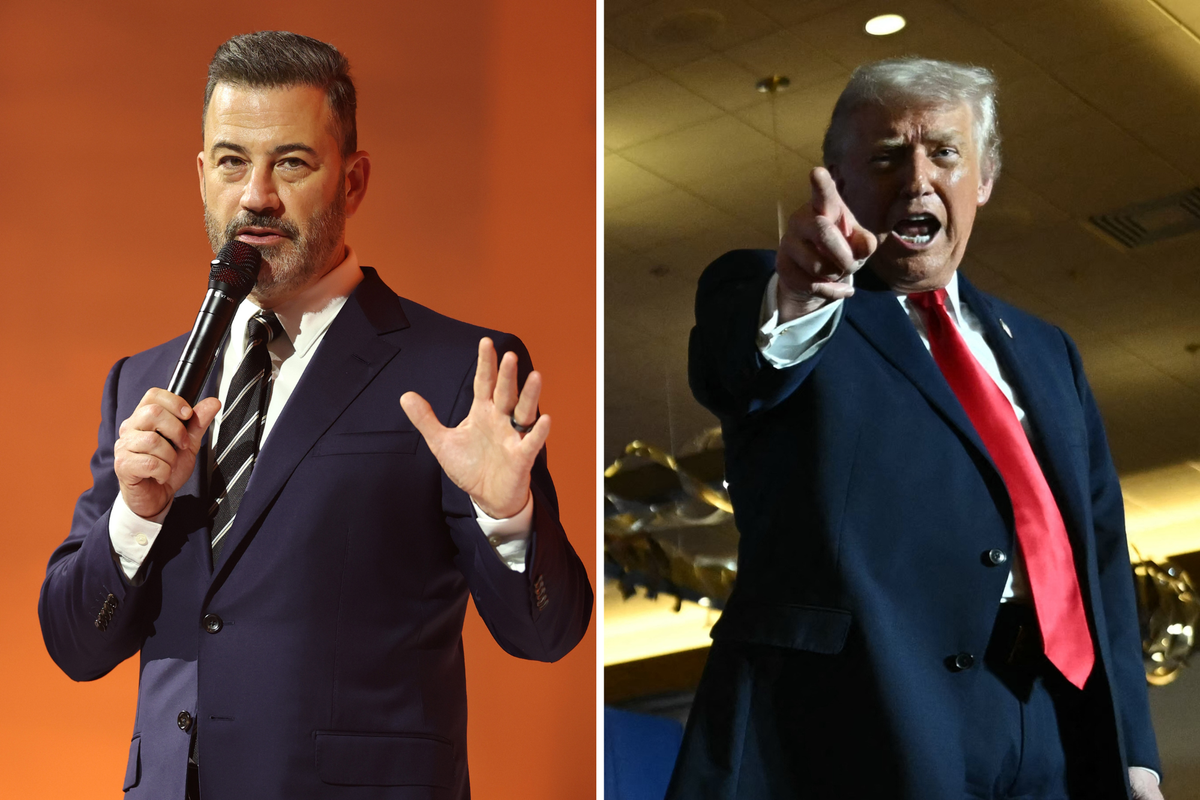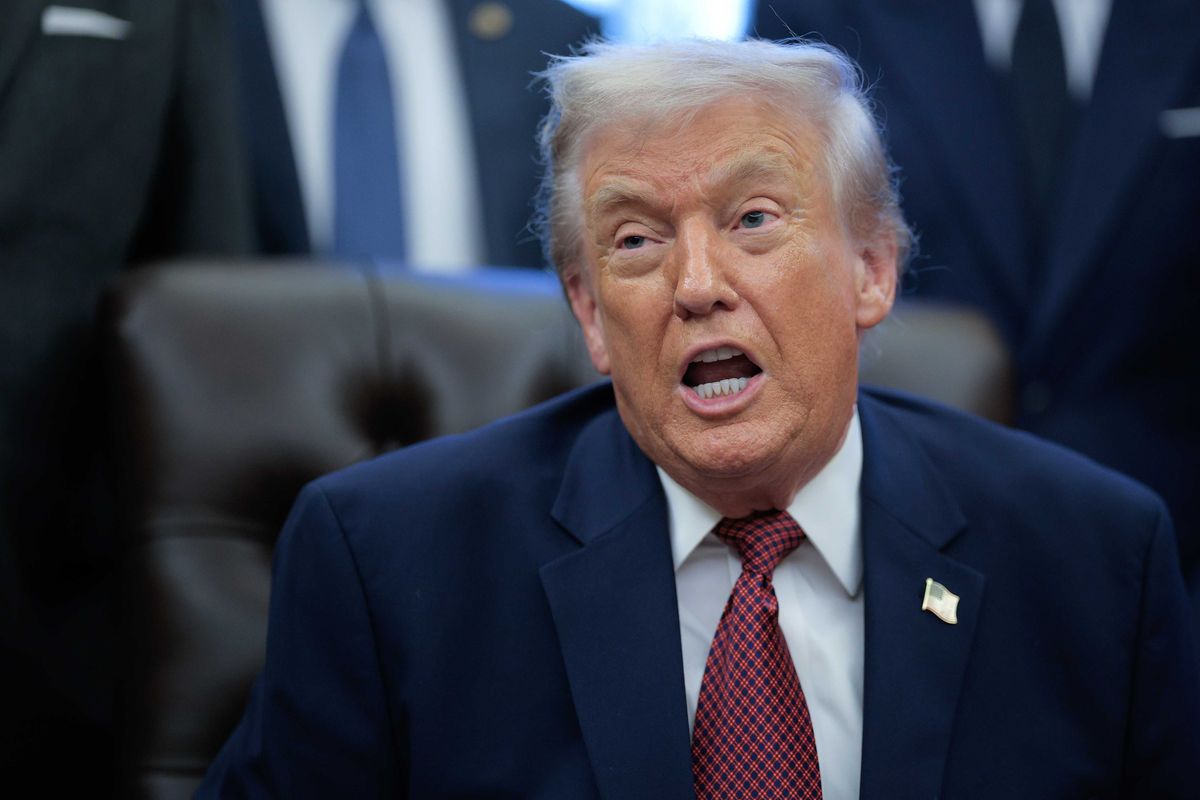Joanna Taylor
May 04, 2020
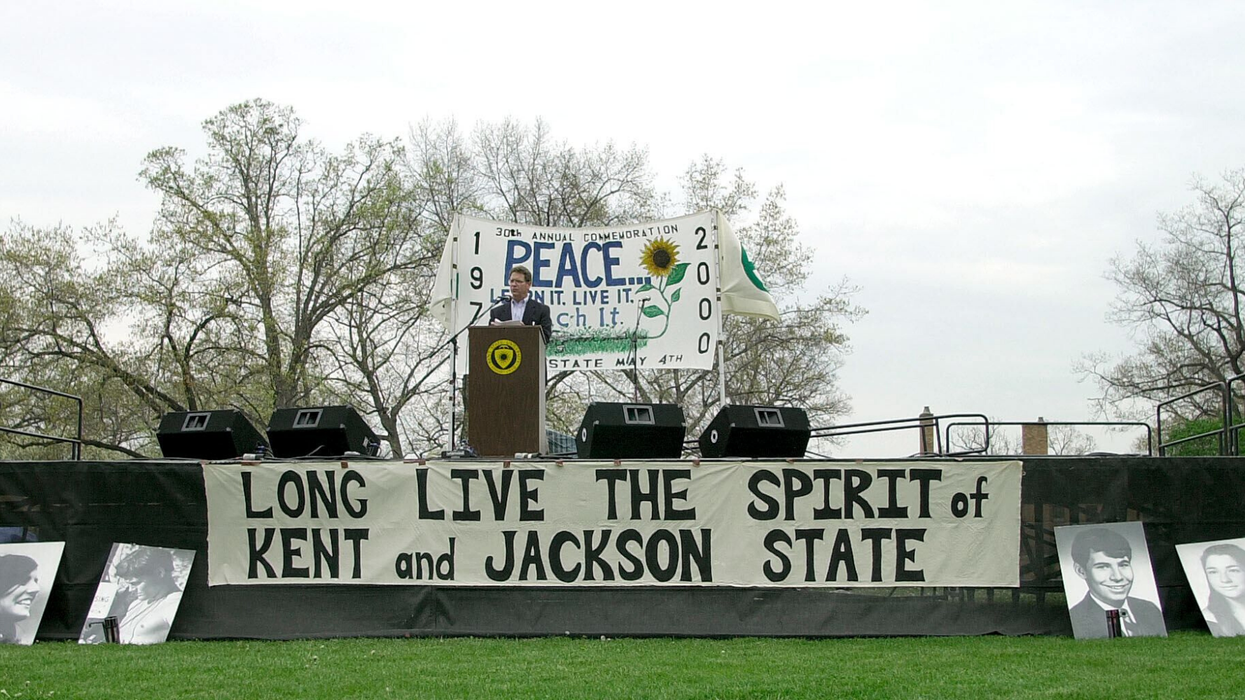
Getty
Today marks 50 years since the Kent State Massacre, a pivotal moment in United States history when four unarmed student protesters were killed by the National Guard.
The massacre sparked widespread national protests and a student strike of 4 million people in Kent, Ohio. It revealed deep divisions in America between vocal protestors and "the silent majority", and highlighted inequalities in response to the killing of black and white students.
A weekend of memorial talks and activities, including speeches from survivors, was cancelled in late March owing to the coronavirus. But remembering the massacre is more important than ever.
What happened at Kent State on 4 May 1970?
Around 2,000 students gathered on the university commons at noon to continue protesting the US's bombing of the neutral Cambodia during the Vietnam War. The number of protesters had grown since the bombing, despite Kent State handing out 12,000 leaflets claiming that the protest had been cancelled.
It is likely many of the students were also protesting the US's involvement in the Vietnam War itself, especially as the government had begun drafting young men into the army through a lottery system. Some of the students at the university were at risk of being called up to fight in a war they did not even support.
Members of the Ohio National Guard attempted to disperse the protesting students, first by approaching them in a Jeep and demanding they move on, and then with tear gas. The protesters reacted by throwing rocks at the Jeep and lobbing the tear gas cannisters back – these had had little effect because of a strong wind blowing away from them.
The National Guard did manage to move the students off the commons and over the nearby Blanket Hill, but did not disperse them. The students instead congregated outside the nearby Taylor Hall, a university building.
The Guard then turned their backs on the protesters, appearing to retreat back up Blanket Hill. But they then turned and fired into the crowd for 13 seconds.
At least 29 of the 77 guardsman fired into the crowd. Four people were killed and nine were seriously injured.
Who was killed during the Kent State Massacre?
Allison Krause and William Knox Schroeder were 19 years old when they were fatally injured by the Guardsmen's bullets, while Jeffrey Miller and Sandra Lee Scheuer were 20.
Krause and Miller had been a part of the protest, while Schroeder and Schueuer were bystanders, walking between classes.
A further nine people were hit by bullets including Dean R Kahler who was shot in the back, leaving him paralysed from the chest down.
Why did the massacre happen?
Why exactly the National Guard began shooting at students has never been conclusively proven, despite being raked over during ensuing legal battles.
The guardsmen claimed they fired in self-defence, which was generally accepted by the courts. None of the Guards faced jail time, although the families of those killed did receive wrongful death settlements.
This explanation for the shooting is deeply controversial because the protesters were unarmed and under the impression that the Guard was retreating. Moreover, the closest person to the guardsmen to be struck by a bullet was a full 80 feet away.
Why is the massacre an important part of history?
A number of reasons:
1. It triggered mass protests across the USA
After the Kent State Massacre, 450 university campuses in the US closed and 4 million students went on strike. At one protest at the University of New Mexico, 11 people were stabbed with bayonets by the New Mexico National Guard.
Over 100,000 people demonstrated in Washington DC. These protests were so ferocious that they were likened by members of the Nixon administration to a "civil war".
2. It shone a light on public opinion of protests and the US involvement in the Vietnam War
In spite of these widespread protests, a silent majority still appeared to support President Nixon and the US's involvement in Vietnam.
A poll taken the day after the massacre revealed that 58 per cent of respondents blamed the students for the massacre, while just 11 per cent blamed the National Guard. Some students reported that on returning home they were told more people should have died to teach them a lesson, and others were even disowned by their families.
As a federal body, the National Guard is directly linked to the White House. But Nixon did not apologise for the killings, and instead blamed the students for what happened to them. His press secretary's official response to the tragedy was that "when dissent turns to violence, it invites tragedy".
Direct US involvement in the Vietnam War would continue for three years after the Kent State Massacre.
3. It highlighted racial inequality in the US
Although sympathies varied, the public reaction to the Kent State Massacre was immediate and immense.
The same cannot be said of the Jackson State killings just 11 days later, when two black student protesters were killed by police.
Phillip Lafayette Gibbs, 21, was killed by buckshot from a police shotgun, whilst 17-year-old high school senior James Earl Green was fatally struck by a bullet.
The police also claimed to have acted in self-defence after attempting to clear the protest of around one hundred students. No arrests were made in connection with the deaths in spite of the president's Commission on Campus Unrest finding that shooting at students was "an unreasonable, unjustified overreaction".
Remembering the Kent State Massacre today.
The site of the shootings at Kent State are a National Historic Landmark. Permanent memorials are erected on the spots where the four students died and events are held each year at the university to commemorate them.
And while this year's memorial cannot take place because of the coronavirus pandemic, it is important that we remember the unjust deaths of those students and the inadequate response of the United States government.
To mark the massacre's 50th anniversary, Kent State are holding a video event, whilst the Kent State Truth Tribunal has published a series of video lectures you can watch.
People are also sharing their reflections on Twitter.
Note: Some images may be upsetting
The first photo seen here was taken by Kent State photojournalism student John Filo, winning him a Pulitzer Prize. The body in the photo is that of Jeffrey Miller, who was killed instantly after being shot in the mouth.
Ohioan political scientist Sara Wallace Goodman also shared her reflections on the importance of remembering the massacre.
One should not assume the army/police/national guard is on your side. Sadly, this is not a lesson POC students need to learn today.
Because three of the four victims killed were Jewish, some, like Yiddish news organisation The Forward, considered how best to honour this aspect of the students's legacy.
Others reflected on the parallels between government violence and neglect then versus today.
The Kent State Massacre serves as a stark and important reminder that those who are supposed to protect us can be the ones doing us harm. And that they won't necessarily face repercussions for it.
People continue to die because of government inaction and violence in the United States and beyond. Almost 300 US civilians have been shot by police so far this year, a disproportionate numer of whom are people of colour. Last year, 1,004 people in the US were fatally shot by police.
Police brutality is also a problem in the UK. Officers used force against people 62,000 times between 2017 and 2018. More than a third of these incidents involved black people.
Meanwhile, governments the world over are being scrutinised for their handling of the coronavirus pandemic which is claiming thousands more lives every day.
Now is an important time for us to hold our governments to account, and to distinguish between deaths that are accidental and deaths that are avoidable.
The Kent State Massacre and the Jackson State killings were heartbreaking tragedies. But they were also deeply and irrevocably political.
When a government, or its police or military, can kill its own citizens and walk away without repercussion, we must acknowledge this for what it is: a grave injustice. And we must honour the legacy of the students who died this week half a century ago by always holding our governments to account when they attempt to justify their own violence or inaction.
Top 100
The Conversation (0)










